
The James Bond we know from those other movies, the Sean Connery Bond, exists but is not the real Bond. He's simply a successor who took the title when the real Bond, who goes by Sir James (David Nivens, one of the original choices to play 007 before they picked Connery), retired to his stately English manor where he mostly tends to his many plants, occasionally gets lost amid the countless rooms and hallways, and laments what has become of the world of spycraft since he stepped away. All those gadgets? Who needs 'em! All that sex? Pish-posh! Now, however, they need Sir James to come out of retirement.
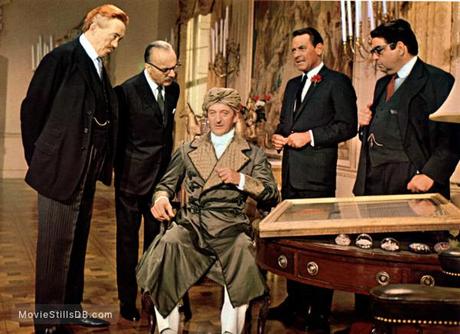
That's the starting point for the 1967 Bond spoof Casino Royale, one of film history's great bizarre oddities. In possession of the film rights to Ian Fleming's first Bond novel, a producer named Charles K. Feldman tried like the dickens to make a serious 007 movie and even reached out to Connery to star. When all of that failed, he went completely nuclear and attempted to kneecap not just the Bond franchise but the entire spy craze of the time. In retrospect, hiring 5 different directors, around 15 different writers, and technically 8 different actors to play James Bond was probably not the best way to go about doing that. Ditto for trying to outspend the most expensive Bond movie to that point. (This spoof cost more to make than either Thunderball or You Only Live Twice, which came out the same year.)
As a result, Casino Royale is a film in which a giant spaceship settles over London, Orson Welles (as La Chiffre) interrupts his bouts of baccarat dominance to perform magic tricks in the middle of a bustling casino floor, and Peter Sellers actually does a full costume Hitler impression while seducing - or being seduced by, it's hard to tell - Ursula Andress ( aka Dr. No's Honey Ryder). Plus, an army of bagpipe players contains within its ranks a barely disguised Peter O'Toole who only sticks around long enough to have this strange interaction with his What's New Pussycat? co-star Sellers (the yellow text is O'Toole's line, the white is Sellers'):
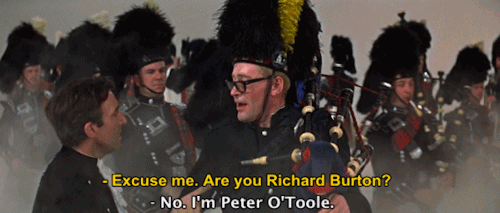
It's one of Sellers' final scenes in the picture. Eventually, he simply stopped showing up to set and they had to hastily write his character out of the story. He spent that time away from the film shacked up with his wife/future Bond girl, Britt Ekland, who, in 2020, revealed she now believes her ex was severely bipolar.
That's but one of the many Casino Royale stories that leave you asking: WTF?
The Long and Short of It
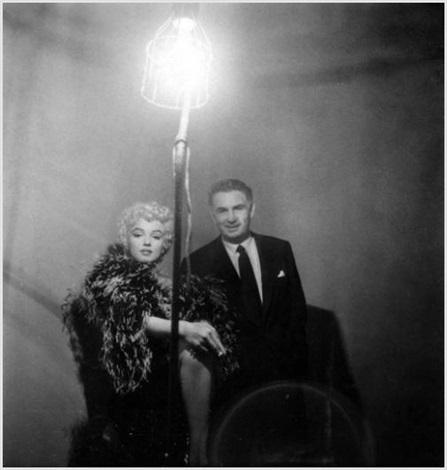
The short story behind Casino Royale (1967): Casino Royale, Fleming's first Bond novel, was adapted as an episode of the American TV series Climax! in 1954, and a year after that, the author sold the film rights to respected actor/director/producer Gregory Ratoff, who tried to get the movie made until the day he died in 1960. His widow then sold the rights to an agent turned producer, Feldman, who could have possibly partnered with Eon on an official Bond movie or simply stuck with his original gut instinct to make a serious movie. Instead, he got greedy and commanded one of those classic runaway productions that tend to send people to early graves. The original screenwriter, Ben Hecht, was already dead, succumbing to massive heart attack mere days after turning in his final Casino Royale script. Feldman himself died from pancreatic cancer barely over a year after making the movie.
The longer version: Cubby Broccoli's old buddy Charles K. Feldman saw the success of the early James Bond movies and - figuring such silly films must be easy to make - wanted in on the action. After all, Broccoli's former producing partner Irvin Allen was making a killing with his Matt Helm spy pictures starring Dean Martin, and Bond co-producer Harry Saltzman was already double-dipping, stepping away from Eon to solo produce the Michael Caine-starring Harry Palmer movies. Feldman wanted is own piece of that pie, but the process proved harder than anyone could have ever expected.
Still, since Feldman was flush with cash after his 1965 hit What's New Pussycat?, he had enough clout to reunite some of the actors (Sellers, Andress, Woody Alen) from that film in Casino Royale and get the dang thing into theaters, insane production overages (the originally approved budget of $6m ultimately doubled to $12m by the end), delays, and all.
Getting Sir James Back Into Action
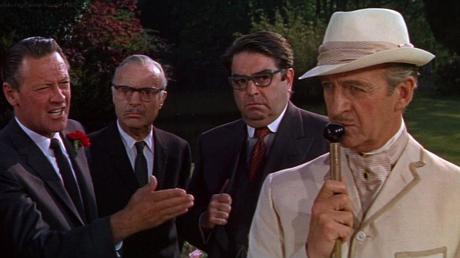
Sir James is pulled back into action by comic tragedy. Intelligence operatives from four post-war Allies visit his mansion to beg his return to help combat SMERSH's "death to all spies" operation. When Sir James steadfastly refuses, M ( Maltese Falcon/ Treasures of Sierra Madre/ African Queen legend John Huston, who also directed this portion of the movie and took the job to pay off gambling debts) orders the complete destruction of his mansion by mortar fire, but M somehow ends up dying in the explosion. (It's all a bit confusing.)
So, Sir James reluctantly agrees to replace his old boss and become the new M. In a bid to confuse the enemy, he immediately moves to give all active MI6 agents - male or female - the title of "James Bond." How will they know who to kill if everyone is James Bond? (The sudden existence of several female James Bonds goes almost completely unexplored.)
It's around this point that you might be thinking to yourself, "That doesn't sound too bad. Fans have always whispered about James Bond being a title, not an actual name, and that each new actor who plays him is in fact playing an entirely new person who just moved up at MI6. Here's Casino Royale adopting that wholesale in 1967! Plus, the idea of an out-of-retirement Bond replacing M and facing his biggest foe yet - bureaucracy and paperwork - sounds kind of funny." You'd be right to think that because, in truth, Casino Royale has a decent enough foundation for comedy and Bond satire. It just goes so horribly, horribly wrong.
The culprit: too many cooks in the kitchen syndrome.
We Have a Writer Down. Repeat, A Writer Down.
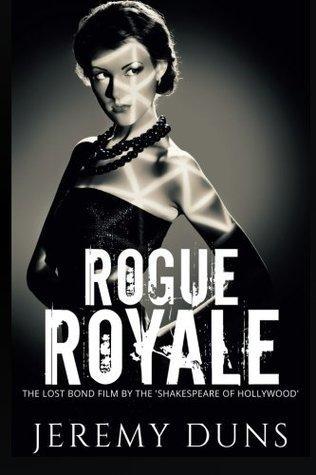
By the time everyone ended up on set and indeed all the way throughout filming, Ben Hecht's relatively serious adaptation of Fleming's first Bond novel passed hands countless times and morphed into such a Frankenstein's monster of rewrites that Frankenstein's monster - played by a pre- Star Wars David Prowse - even appears on-screen near the end for an unexplained sight gag.
Here's a partial list of some of the writers who helped stir the Casino Royale pot: Billy Wilder (yes, the Double Indemnity/ Sunset Boulevard/ Some Like It Hot/ The Apartment Billy Wilder), Catch-22's Joseph Heller, Frank Buxton, Mickey Rose (an early Woody Allen collaborator who later co-wrote Take the Money and Run and Bananas), Terry Southern ( Dr. Strangelove) and Wolf Mankowitz (one of the original writers of the Dr. No screenplay - in his version, Dr. No would have been a monkey).
The directors included Huston, Joseph McGrath (who filmed the Peter Sellers and Orson Welles scenes), Robert Parish, Val Guess (the coda with Woody Allen), Ken Hughes (the Berlin sequences), and an uncredited Richard Talmadge for coordinating the hectic finale where the cavalry literally arrives only to end up fighting an Indian war tribe in the middle of a casino, which might seem like a sly visual joke today but wasn't intended that way since the first Indian casino wasn't built until 1979.
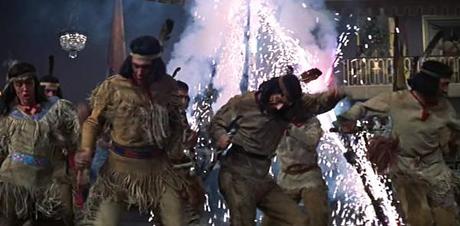
The production overtook three enormous soundstages sprawling from MGM to Pinewood to Shepperton, and there was precious little coordination or communication between the directors. Ken Hughes recalled, "None of us knew what the other guy was doing. When you've got six directors, you've got continuity problems. I'd have to call up to find out what an actress was wearing in the sequence before mine. You'd often find, however, that people would walk through the door with different clothes-and different characters as well."
This multi-director approach was an experiment but not an entirely novel one. Several film anthologies had used multiple directors to helm different segments quite successfully. And the over-the-top satire and comedy was similarly inspired by other films of the time, like One, Two, Three (1962), Dr. Strangelove (1964), The Loved One (1965), Lord Love a Duck (1966), and, most obviously, What's New Pussycat?.
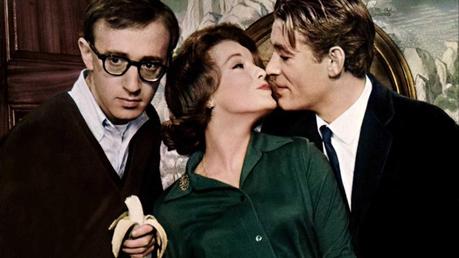
But applying a film anthology, director-by-committee approach to a movie with a throughline narrative was a damn risky idea, especially for a production on the scale of Casino Royale. Similarly, what you don't see in the list of comedies that likely influenced the script is any strictly spy movie content. That's because Casino Royale is bizarrely disinterested in truly spoofing James Bond beyond poking fun at 007's weakness for the opposite sex. As script consultant Ray Morton retrospectively argued, "The [ Casino Royale] just uses Bond as a jumping-off point for a lot of nonsense that doesn't have much to do with the character or phenomenon it's allegedly spoofing, so ultimately the whole thing is really just pointless."
Pointless? Maybe. But Charles K. Feldman wasn't hearing it. He was convinced he was sitting on a gold mine, if only he could hold it all together. "I hadn't seen [Feldman] in four weeks, so I sent him a map of London showing him how to get to the studio," Ken Hughes also recalled. "I was in the office when Columbia pulled out for two hours. Charlie called them back and said, 'Okay, I'm glad you're out. I've got full funding from Paramount.' They came back but he had to keep doing things like that to keep the movie going."
A Bunch of Mini-Movies

Given all of that backstory, it's not surprising to discover Casino Royale ultimately plays out like a series of mini-movies loosely connected by Sir James barking orders from his new office as M where he works with Moneypenny's gorgeous daughter (Barbara Bouchet) who also simply goes by "Moneypenny."
There's a vignette - which very well may have influenced the Sir Galahad at Castle Anthrax sequence in Monthy Python and the Holy Grail - involving Sir James at a Scottish estate where he fends off the unrelenting romantic advances from the original M's widow (Deborah Kerr) and many voluptous daughters. (He doesn't know they've been replaced by SMERSH agents.) In another section, Vesper Lynd (Andress) recruits a baccarat expert (Sellers) to pose as Bond and defeat Le Chiffre. In smaller in-between spaces, you see how one of the new James Bonds (Terence Cooper) trains to fend off would-be seductresses, Mata Bond - Sir James' daughter from his past dalliance with Mata Hari - visits a very, very Dr. Strangelove-likeauctioning of blackmail photos, and Sir James' nephew Jimmy (Woody Allen) tries to talk his way out of a firing squad.
Whenever the film starts to actually kind of make sense or approach coherence, a joke song teasing James Bond breaks out, a spaceship emerges out of nowhere, or a glaring continuity error happens - like a car chase sequence that ends almost literally before it begins.
It's enough that while I tried to give the movie my full attention I couldn't stop noticing and pondering the little things. Like, for example, how Peter Sellers and Orson Welles sit opposite one another during the climactic card game but never actually share the screen. There's a reason for that: Sellers was so intimidated that he couldn't bring himself to actually act on the same set as Welles, who filmed his sides and then gladly vacationed to a beach house where he kept collecting a paycheck.
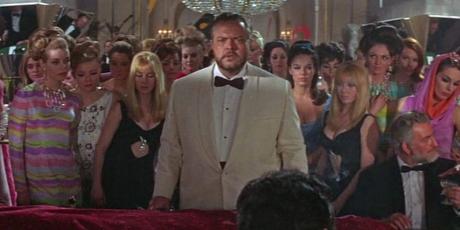
Had this all happened in a different era there would probably already be a documentary about the making of Casino Royale and that documentary would likely be more interesting than the movie itself. However, you can't really speak in counterfactual terms when it comes to Casino Royale. This movie is inescapably a product of its unique historical moment - the post-Bond spy craze, last gasp of the studio system excess, Yellow Submarine opening animation, Bacharach tunes, early Woody Allen schtick, and kitchen sink attitude toward storytelling.
Did I Like It?

Casino Royale is not without its charm. I genuinely laughed when Jimmy Bond escapes a firing squad only to find a completely different firing squad on the other side of wall. The concept of world leaders gathering in secret to bid on blackmail photos is fairly hilarious to me. David Niven deserves a lot of credit for holding his part of the story together through sheer stiff upper lip attitude. After Dr. No, it was nice to hear Ursula Andress's actual speaking voice. And the film's ever-ballooning budget ensures there is plenty of crazy stupid money on the screen, including a seemingly endless parade of psychedelic evil lairs in the final act.
More than anything else, though, Casino Royale just beat me down until I wanted it to finally - and mercifully - end. This is a film so notoriously convoluted and over the top that it salted the Earth for any proper adaptation of the Fleming novel for nearly 40 years. (Legal rights played some part in that as well, of course.) Martin Campbell, director of the Daniel Craig Bond Casino Royale, once admitted he's never made it all the way through the 1967 version. I don't blame him. Aside from character names and vague story similarities, his Casino Royale has nothing to do with the Charles K. Feldman Casino Royale.
Of course, any film that goes as big as Casino Royale and throws so much money at the screen is bound to rack up admirers over the time - some of them enjoying ironically, others not. I...am not one of those people. The best thing to come out of this movie is, besides probably the nostalgia for those who saw this when they were kids, is the Burt Bacharach song "The Look of Love" (sung by Dusty Springfield).
Source: Nobody Does It Better: The Complete, Uncensored, Unauthorized Oral History of James Bond
